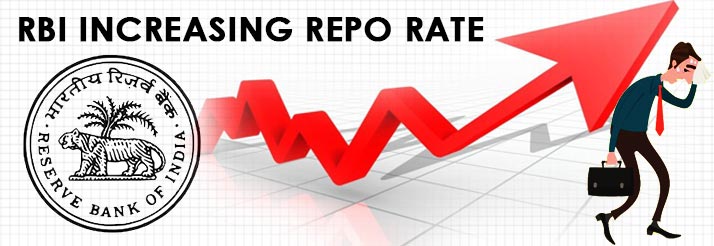What is a Repo Rate:
In simple terms, a repo rate is the rate at which the RBI (Reserve Bank of India) lends money to banks when they suffer from shortage of funds. Banks need to maintain a certain cash limit always. In an event when they don’t have enough money to maintain the limit, they borrow money from the RBI at the current repo rate.
Why is the repo rate needed?
The RBI used repo rate to control inflation. RBI will increase the repo rate so that banks will either borrow less from them or not borrow at all. This ensures that the money supply in the market is less.
Steps showing how repo rate helps in controlling inflation:
- RBI increases repo rate.
- Banks will borrow less money from the RBI.
- Banks now have less money to lend to the customer.
- Banks will then increase the interest rate on lending.
- Customers reduce or stop taking loans because the interest rates are high.
- Since money is less, customers will spend less.
- Since spending is less, demand of everything slows down.
- This controls inflation.
Once the RBI can see that inflation is lower, they reduce the interest rates and the money supply is increased in the economy.
What is the current repo rate as of 1st July 2018?
To maintain the inflation target, the RBI has hiked the repo rate from 6.25% to 6.50%. This is the 2nd time in 4 years that the RBI has hiked the repo rate.
How does this impact the common man and their loans?
The common man will bear the brunt of this as loans such as home loan, personal loan business loan, LAP, Car Loan etc will get costlier. As the repo rate increases, the banks might also increase the interest rate on loans. Hence, loan EMI might be higher. In such a scenario with rising rates, it is wise to try and prepay your loans in order to save money in the long run.
This is one possibility. The other being that banks can choose to not raise the rate of interest to ensure no extra burden is passed on to the customers. Hence if you are planning to buy your dream home, you might want to compare loan rates of different banks and decide on taking a home loan prior to the banks increasing the interest rates.










